Featured Comment:
“I made this for my fiancee and myself today and wow! What an explosion of flavour! It’s a perfect dish! That japanese tartar sauce is so incredibly good and the chicken is mouthwatering! Thank you Yuto for another excellent recipe!”
– @rodmund83 (from YouTube)
What is Chicken Nanban?
Chicken Nanban is a popular Western-style “yoshoku” dish from Japan. It’s made with juicy chicken thigh coated in egg and potato starch, then fried and coated in a tangy, sweet “Nanban” sauce. Lastly, the dish is topped with a rich and creamy Japanese-style tartar sauce.
You can find chicken nanban in restaurants, homes, bento boxes, and convenience stores. With all these flavors and textures going on, it’s easy to see why chicken nanban is such a well-loved dish in Japan!
Chicken Nanban is most commonly served with rice and shredded cabbage or salad.
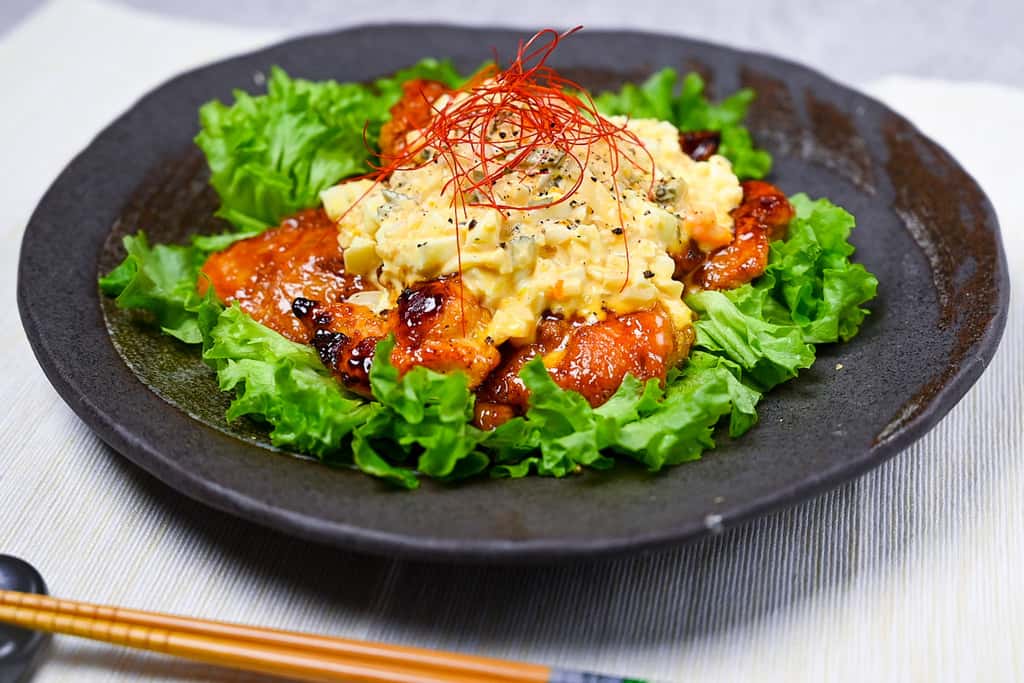

How I Developed This Recipe
Nowadays, Chicken Nanban is a popular dish across Japan, with every home and restaurant putting its unique spin on it. My version strays slightly from the traditional path. I opt for shallow frying instead of deep-frying the chicken, as in karaage.
I toss it in a homemade sweet and savory sauce that envelops each piece in a layer of bold flavors. But I don’t stop there. I finish it with a generous spoonful of homemade tartar sauce, adding a creamy, tangy contrast that elevates the dish.
It’s a delightful twist on the usual fried chicken, offering a different yet familiar taste that I think you’ll love!
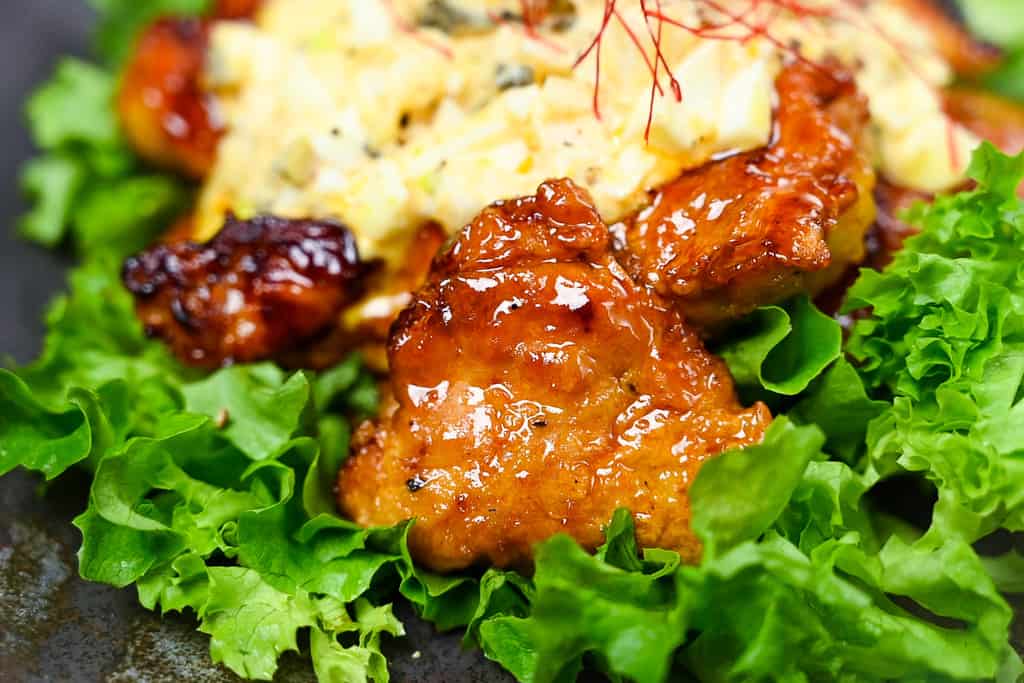
Ingredients & Substitution Ideas
- Chicken Thigh: Choose boneless cuts with skin-on to ensure juicy and flavorful results.
- Cake Flour: Also referred to as weak flour, this low-gluten option is ideal for keeping the batter tender and preventing chewiness.
- Egg: Whether medium or large, an egg helps tenderize the meat and contributes to a fluffier batter.
- Potato Starch: A favorite in Japan for fried chicken, it creates a crispy coating. Cornstarch is an acceptable substitute if needed.
- Cooking Oil: Opt for neutral oils with high smoke points like canola, sunflower, or peanut. For those exploring other options, rice bran oil and extra virgin (white) sesame oil are my recent favorites.
- Nanban Sauce Ingredients: Combine sugar, dark soy sauce, and rice vinegar for a tangy and sweet flavor.
- Homemade Tartar Sauce Ingredients: A delightful mix of boiled eggs, yellow onion, pickled gherkin, lemon juice, Japanese mayonnaise, sugar, tomato ketchup, salt, pepper, and dry parsley creates a creamy and tangy condiment perfect for pairing with the chicken.
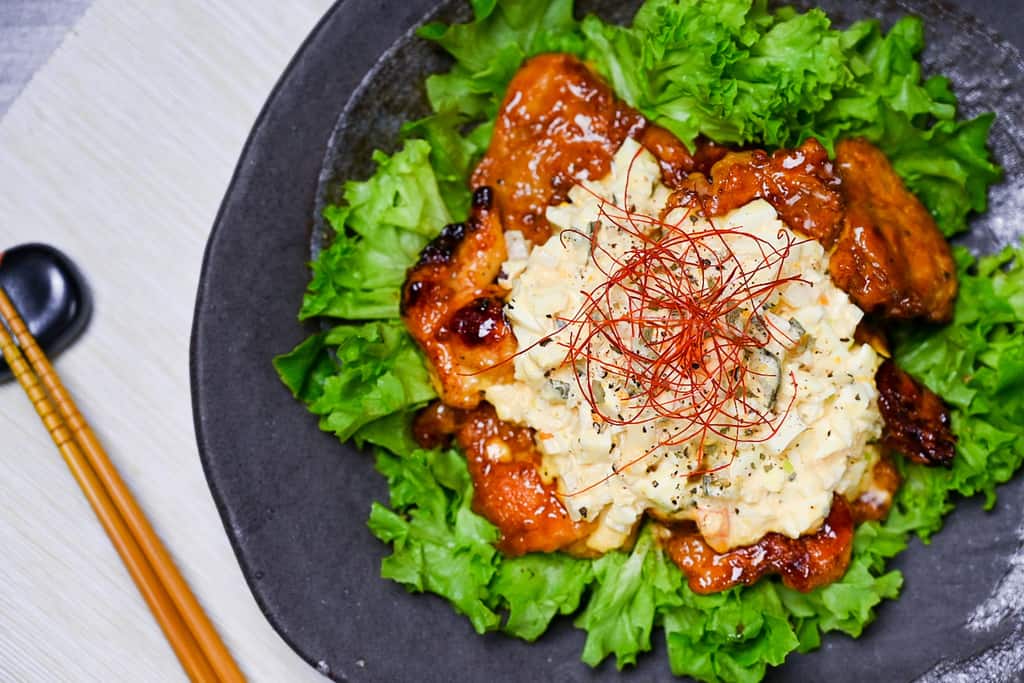
Visual Walkthrough & Tips
Here are my step-by-step instructions for how to make Chicken Nanban at home. For ingredient quantities and simplified instructions, scroll down for the Printable Recipe Card below.
If you prefer to watch the process in action, check out my YouTube video of this recipe for a complete visual walkthrough!
Finely dice the pickled gherkins, onion, and eggs. The reason for dicing by hand (rather than using a food processor) is so that the tartar sauce has a chunky texture.
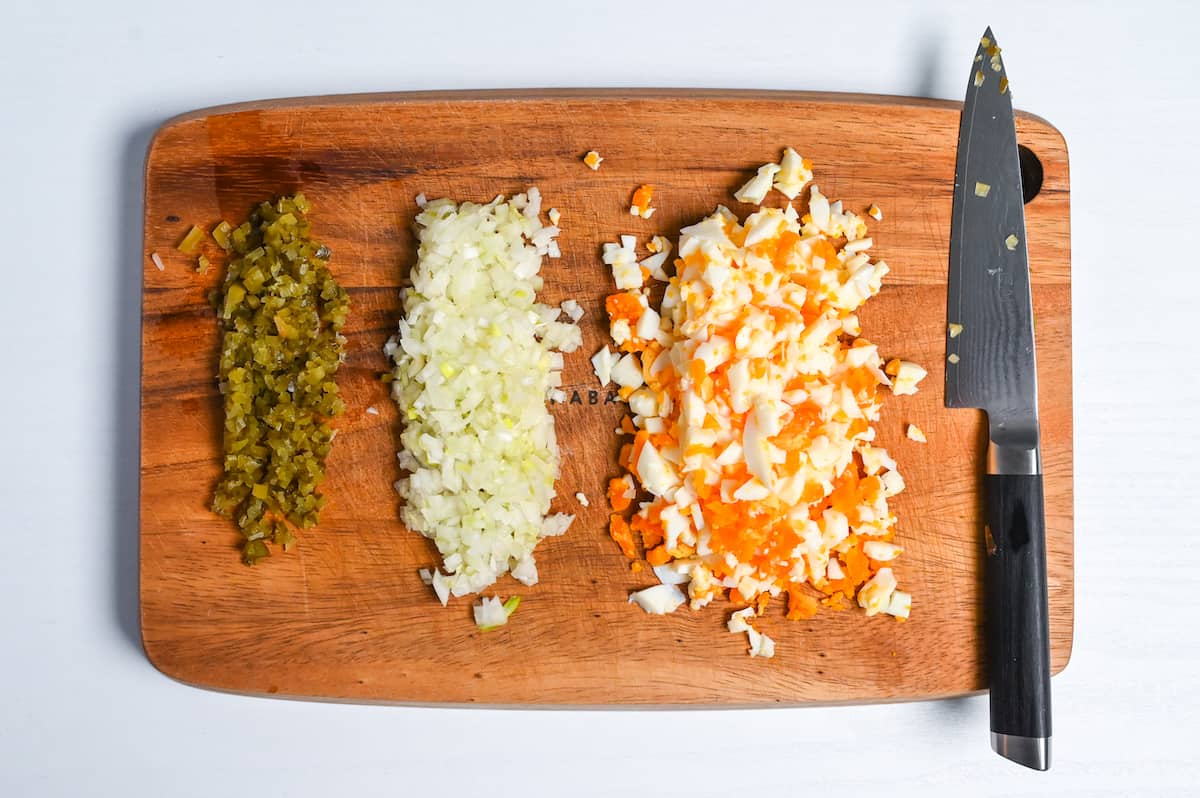
Add the diced ingredients to a mixing bowl along with lemon juice, Japanese mayonnaise, sugar, ketchup, salt, pepper, and dry parsley.
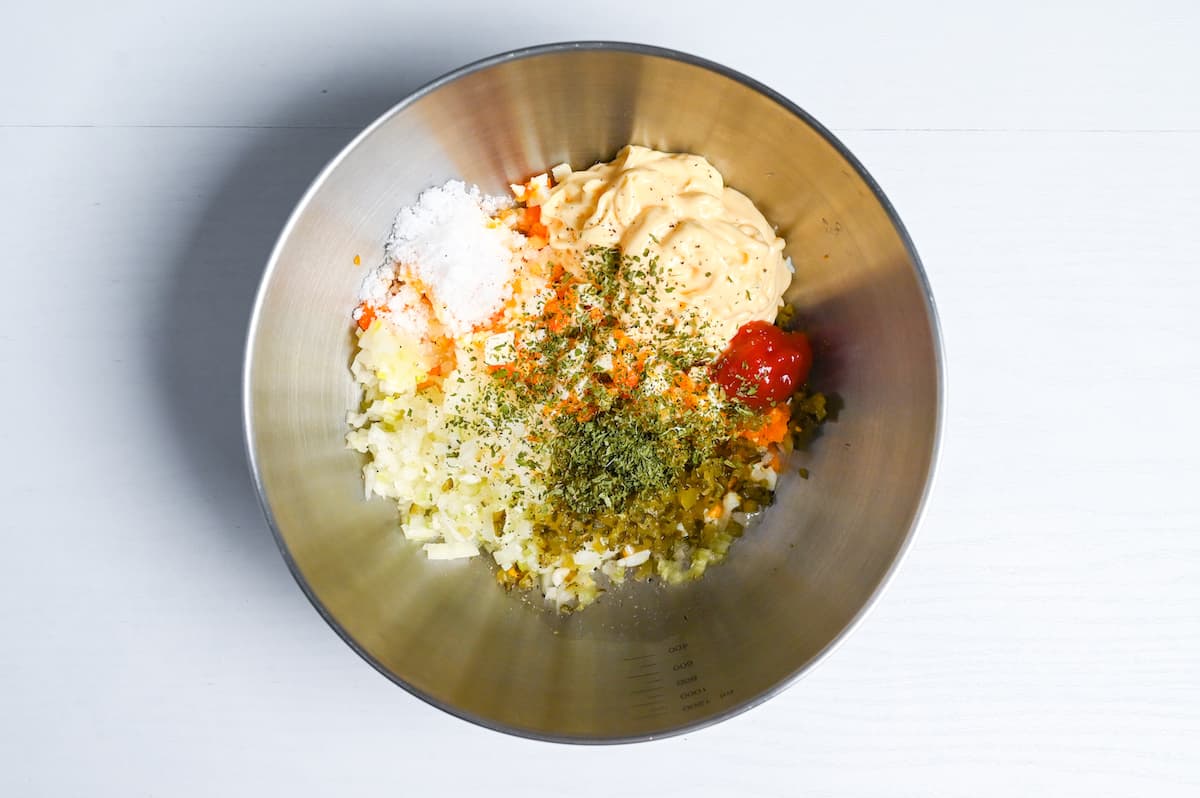
Thoroughly mix until all the ingredients are evenly distributed.
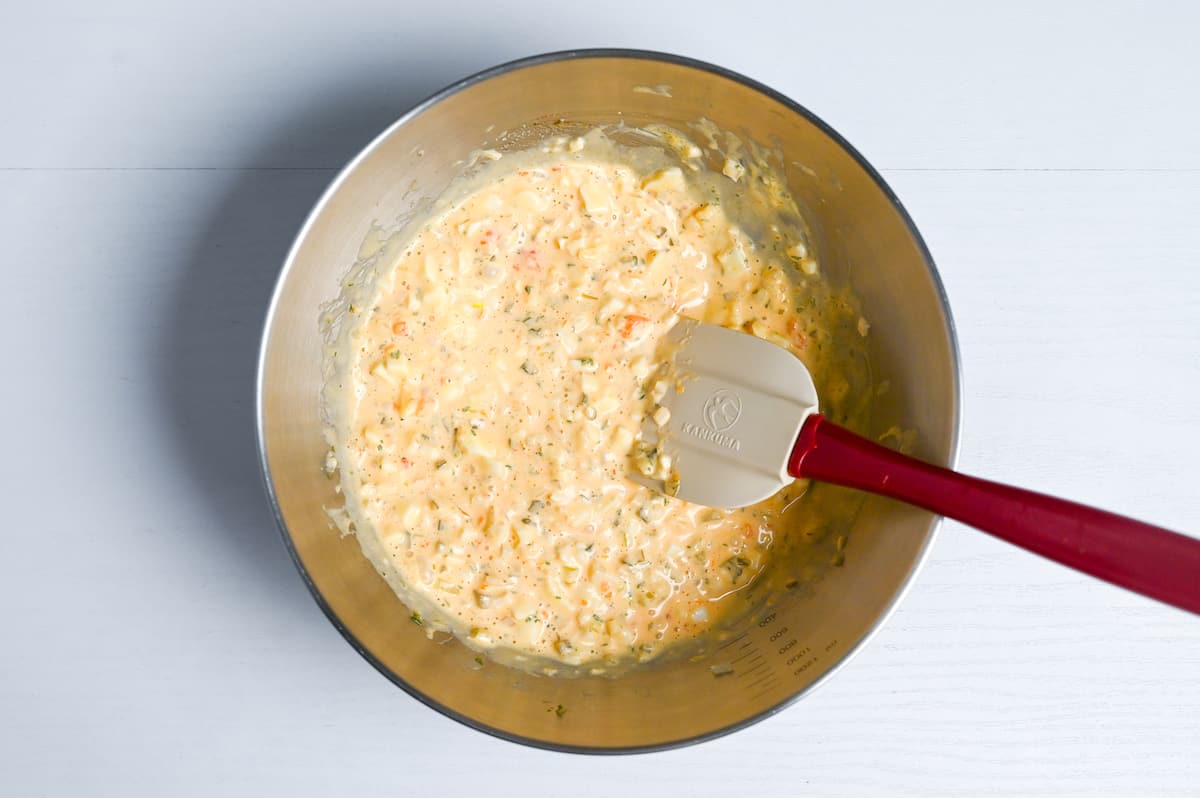
Transfer the tartar sauce to a container and chill in the fridge until serving time.
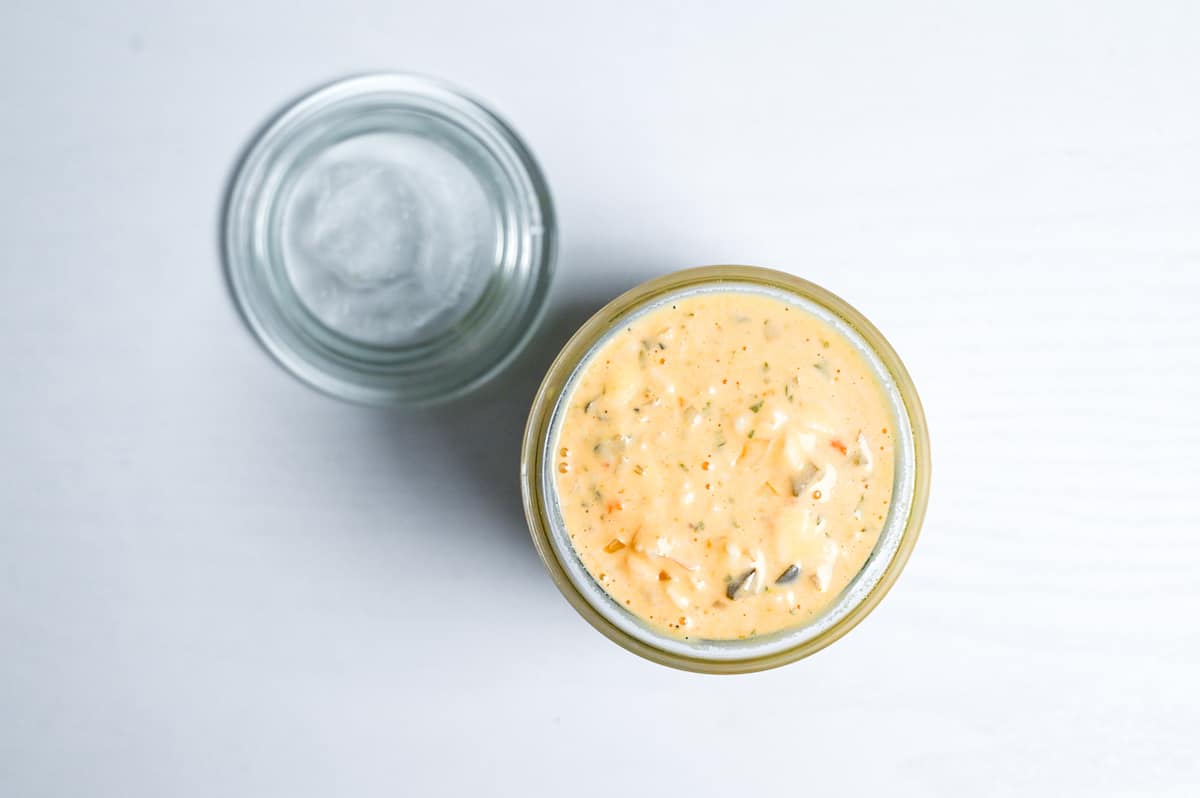
Take a small bowl and mix sugar, soy sauce, and rice vinegar together. This is your nanban sauce. Set aside for later.

Cut the chicken thigh into bitesize pieces and place them in a bowl. Sprinkle with a pinch of salt and pepper, then add the flour and mix until evenly coated.
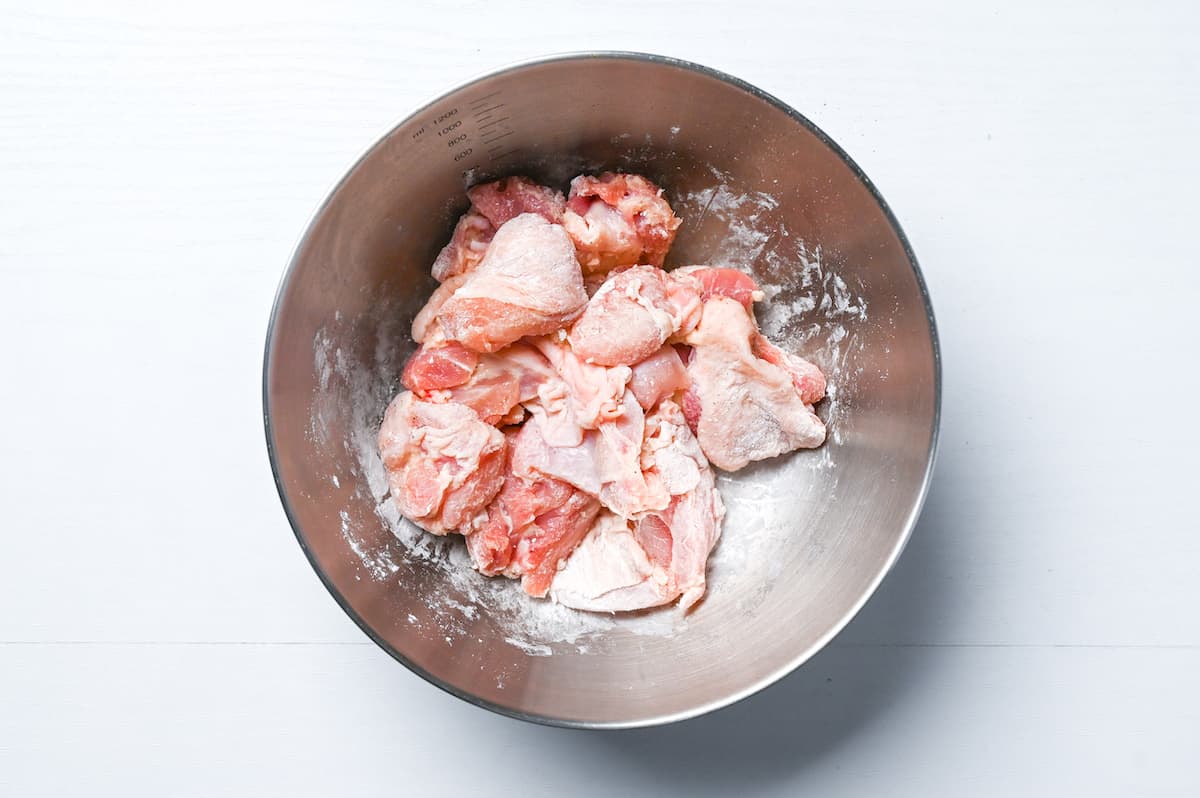
Try to cut the chicken so that the pieces are around the same size; this will ensure even cooking!
Crack the egg into the bowl and mix thoroughly. The egg not only helps form a batter but it also tenderizes the chicken meat.
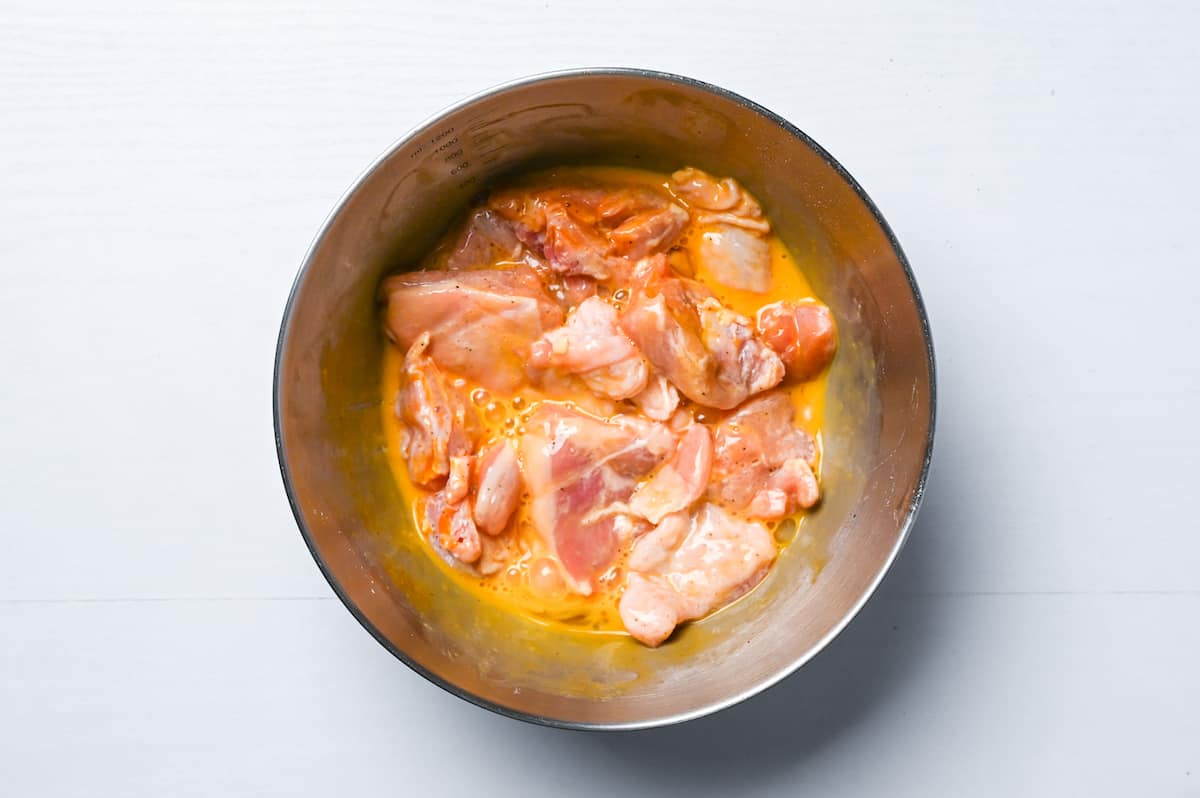
Add potato starch and mix thoroughly.
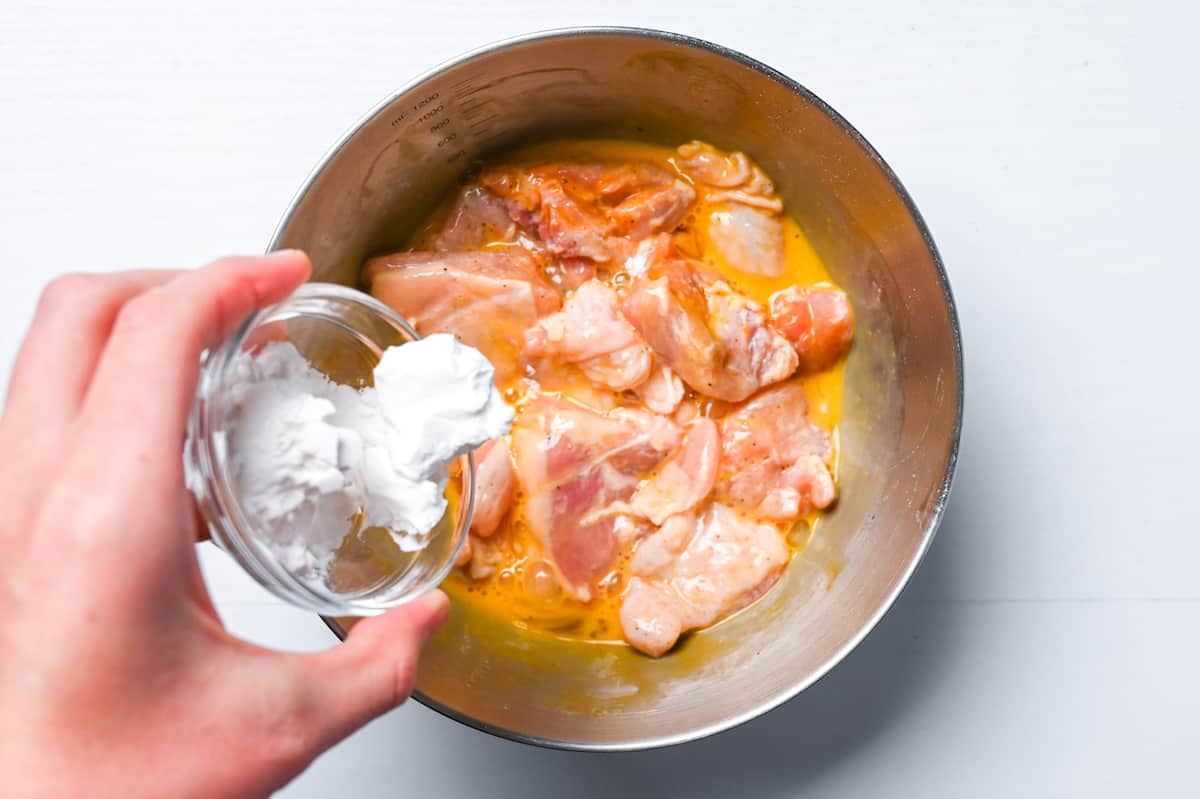
Make sure the starch is well incorporated without any lumps.
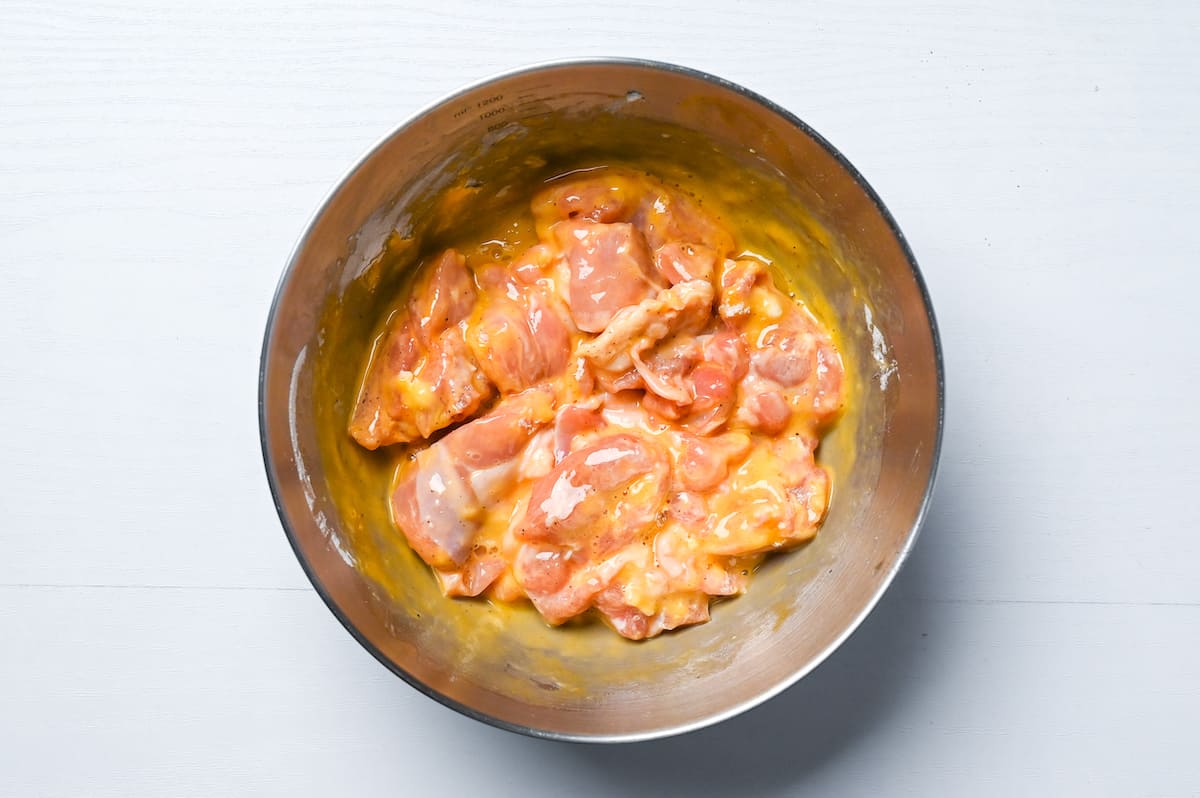
Heat a frying pan on medium. Once hot, add 2 tbsp of oil and swirl the pan so the base is evenly coated. Add the chicken and fry for 3 minutes on each side.
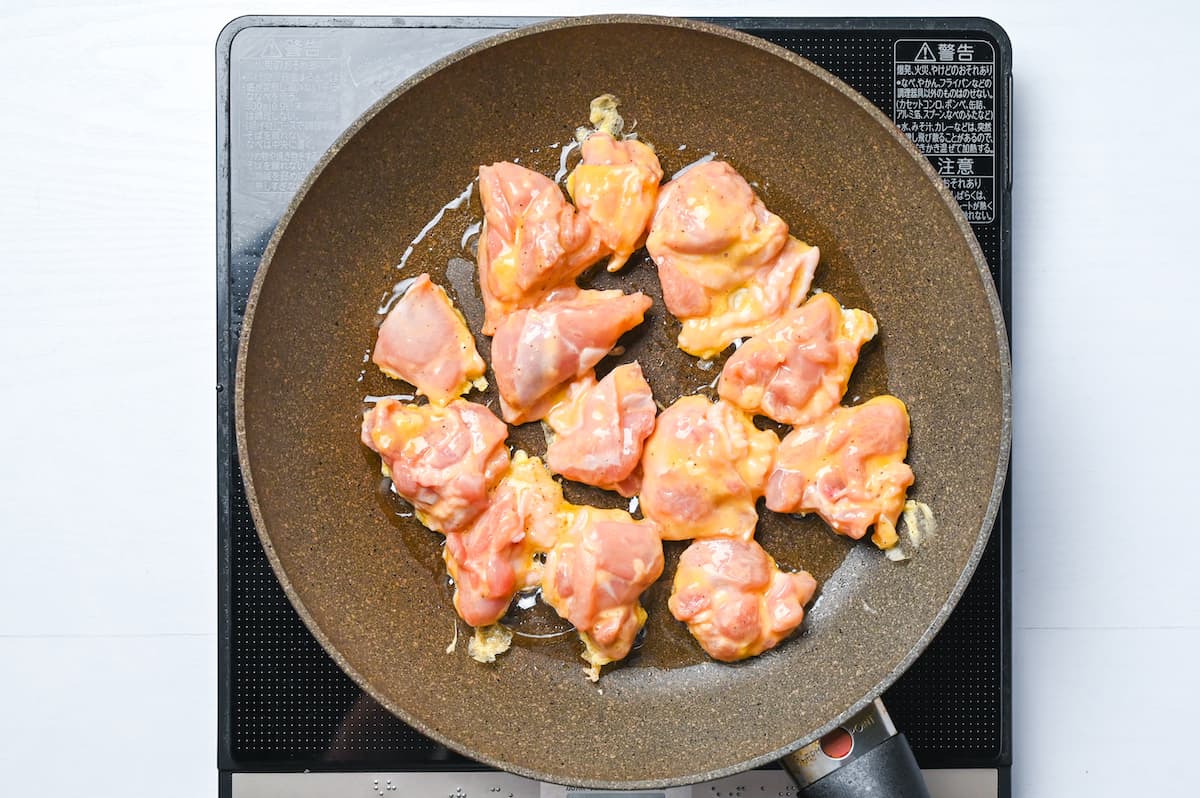
The batter should become golden.
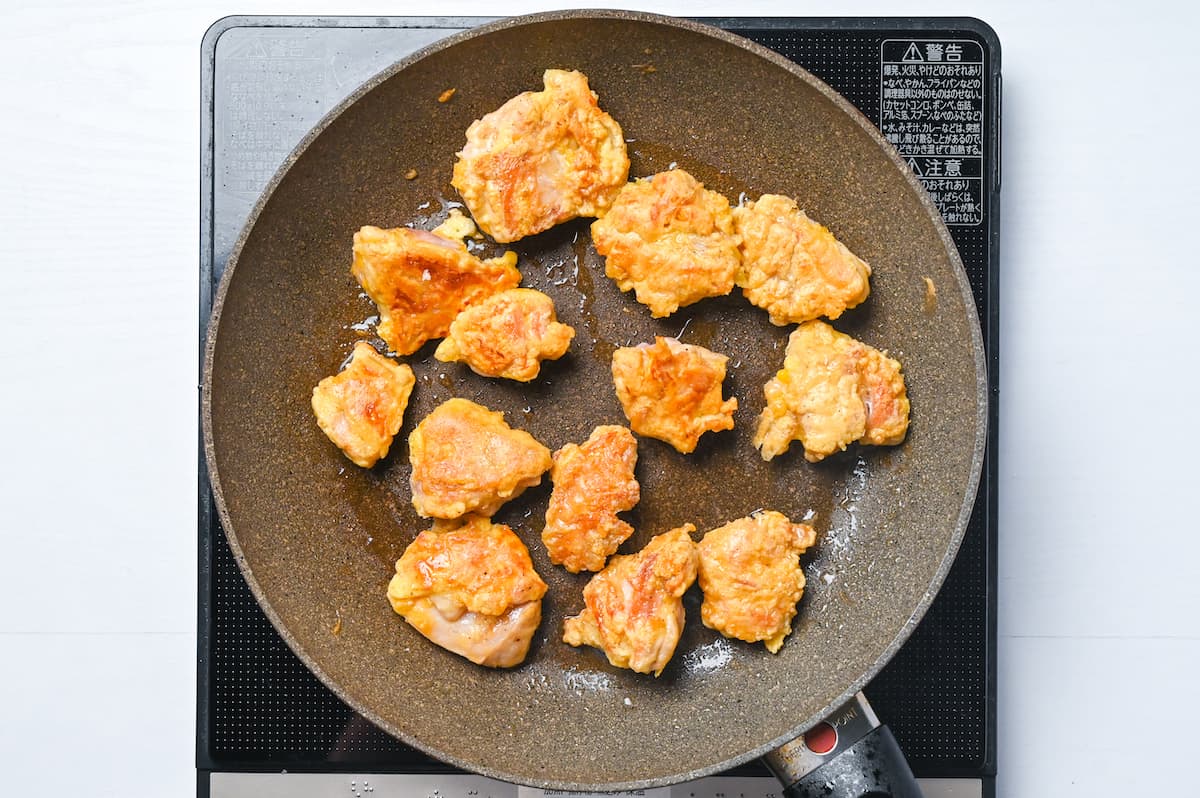
Once the chicken is cooked through, push it to one side and remove the excess oil with kitchen paper.
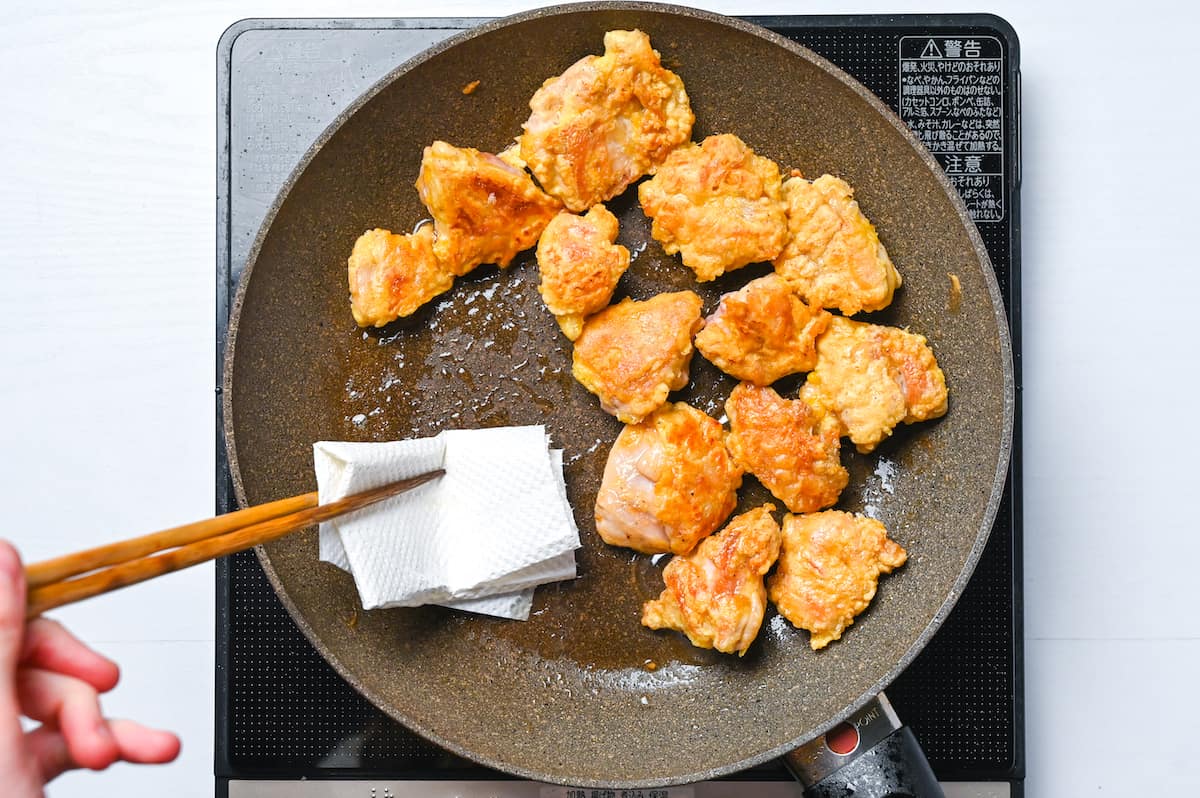
Reduce the heat to medium-low and add the Nanban sauce.
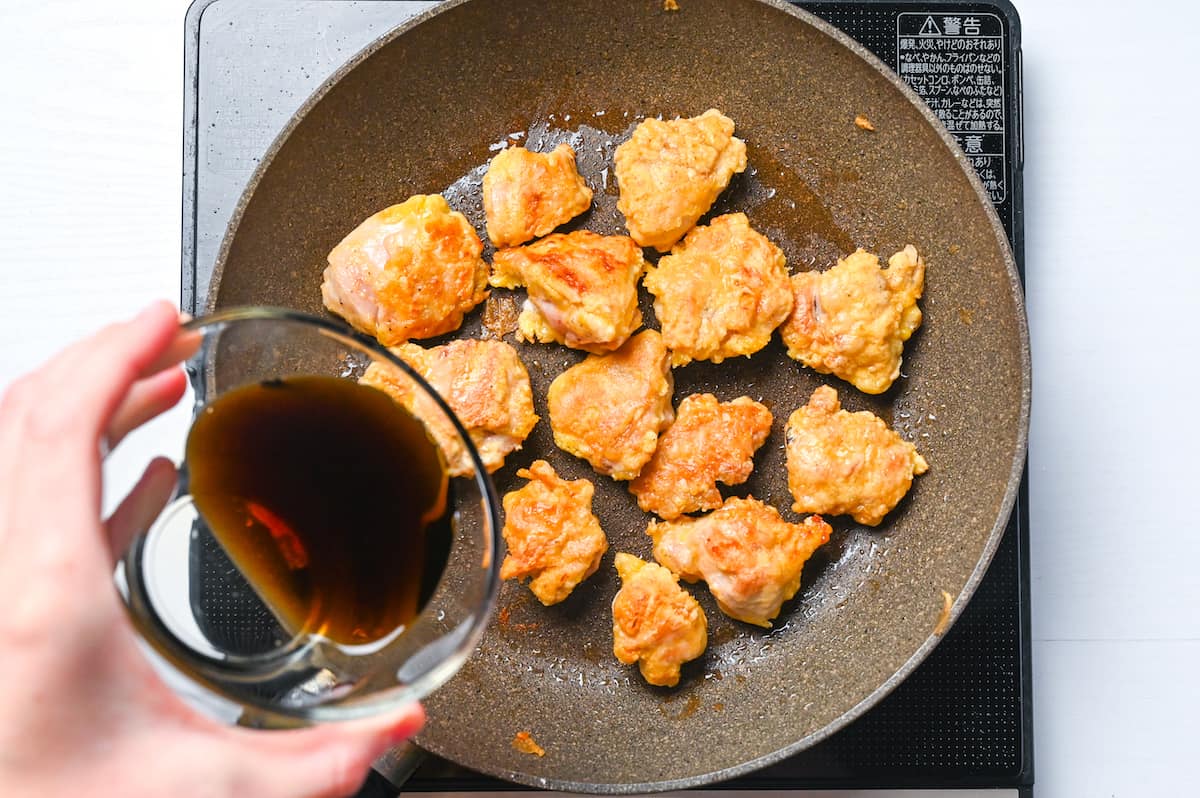
Move the chicken around in the sauce until every piece is covered.
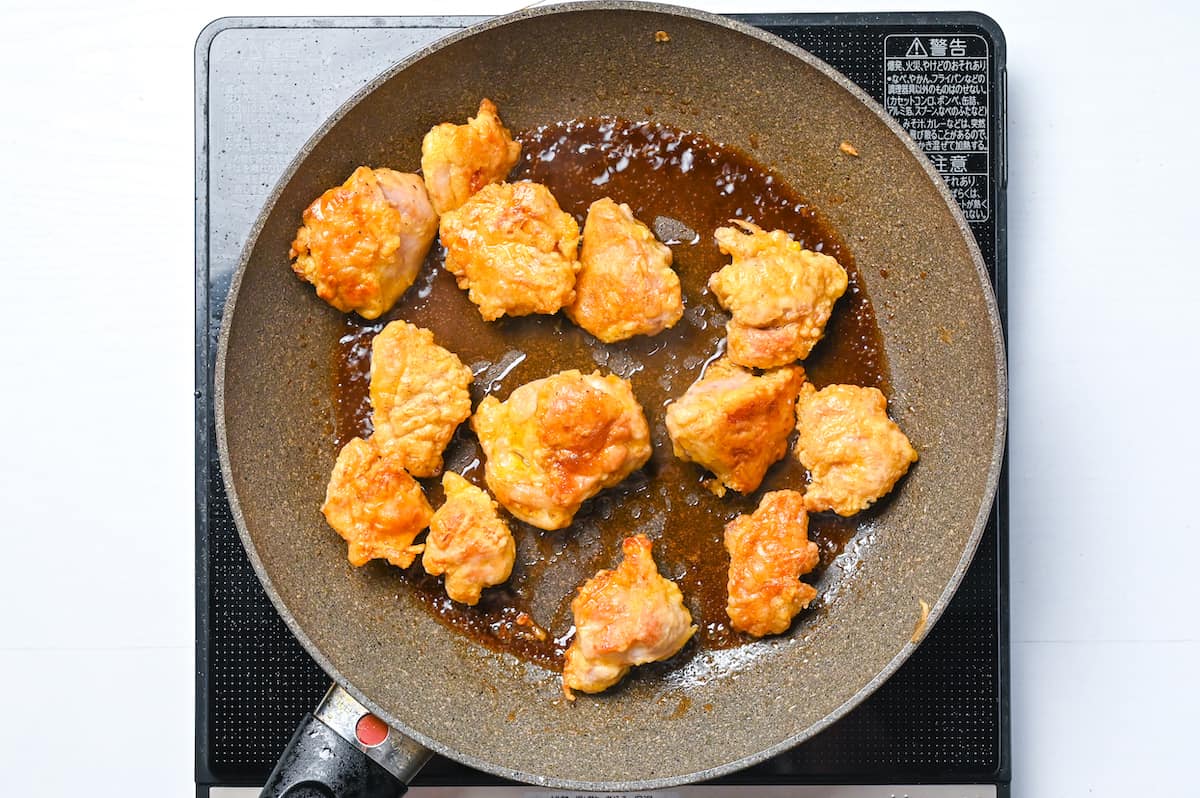
The sauce will thicken slightly; if it thickens too quickly, then turn off the heat and finish cooking using residual heat.
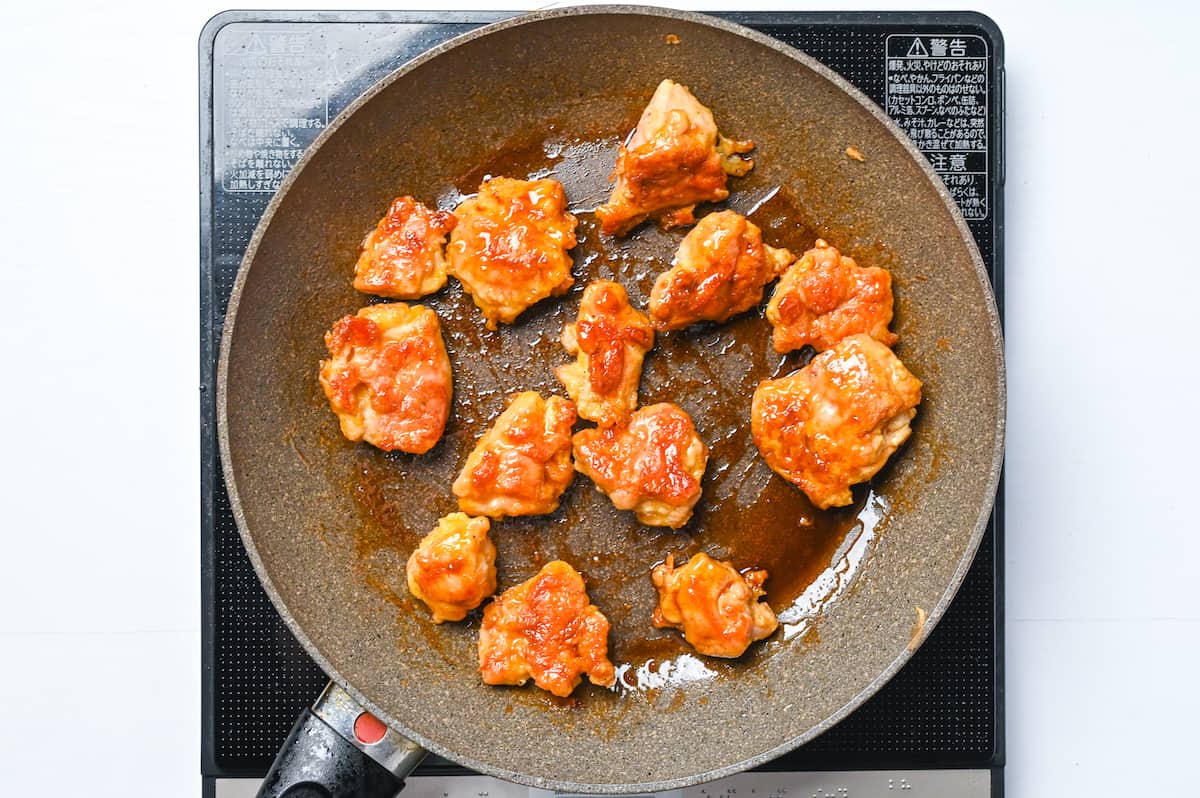
Arrange a bed of lettuce on serving plates and make a mountain of chicken nanban in the center.
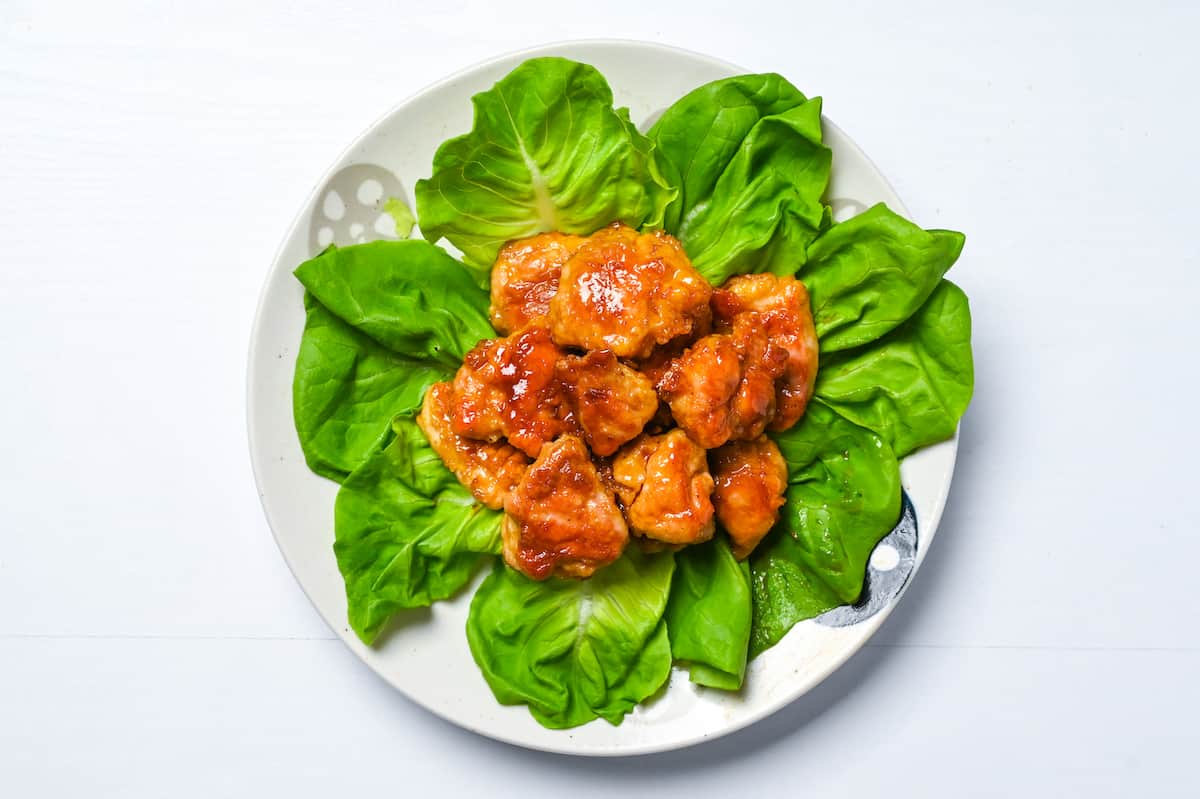
Top with a generous amount of tartar sauce. (Alternatively, you can serve the tartar sauce on the side for dipping.)
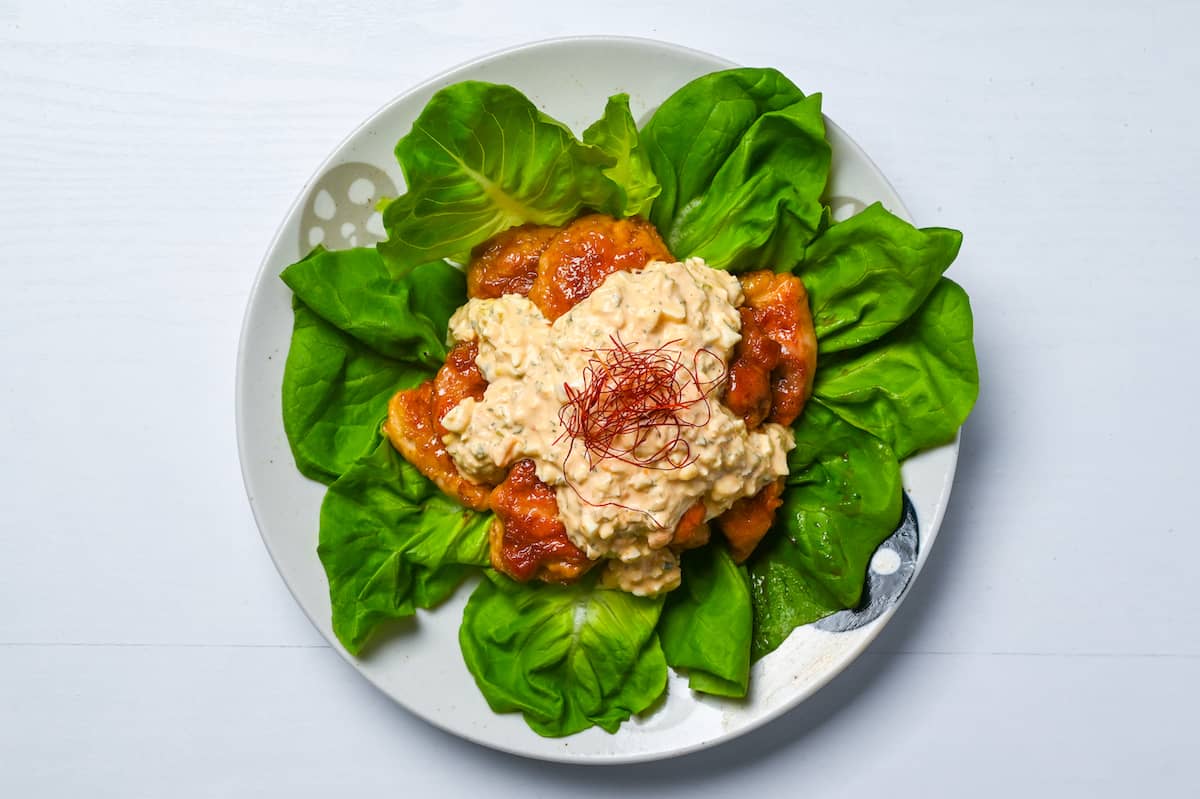
Enjoy!
Jump to Full Recipe Measurements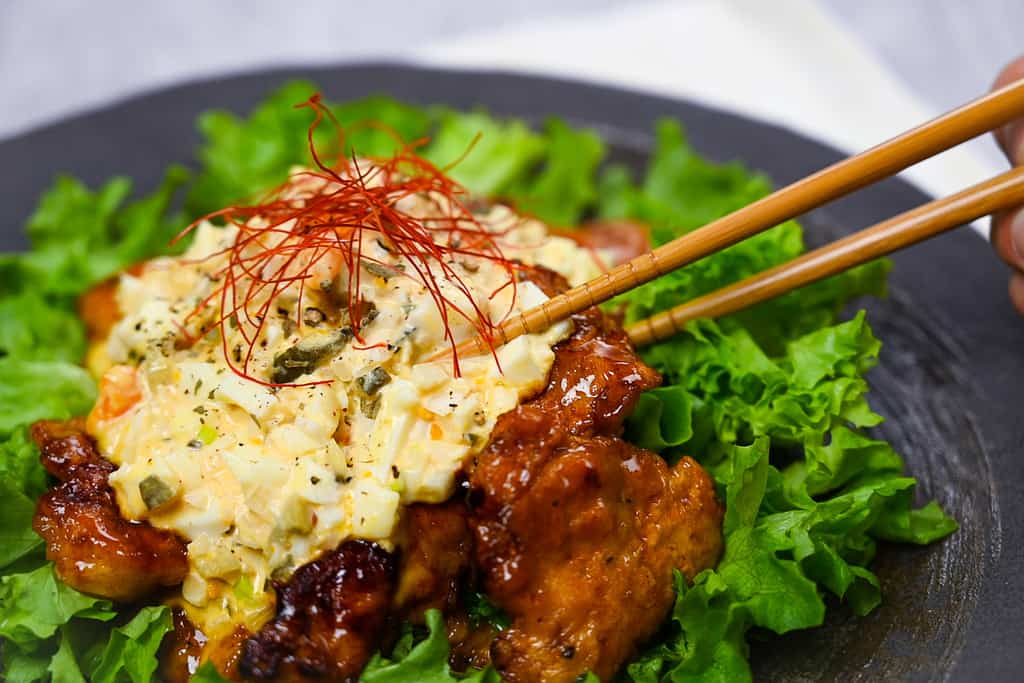
FAQ
Chicken Nanban originates from Miyazaki prefecture, located in Kyushu, the southern island of Japan, and has influences from Portugal. The dish is considered the soul food of “Nobeoka,” a city within Miyazaki Prefecture where it was created.
Chicken Nanban appeared around the 1960s and was served to workers at the Western-style restaurant called “London.” One apprentice went on to open his own restaurant called “Naochan,” serving dishes that, before this point, were only served to the other cooks.
Chicken Nanban became popular all over the city and traveled across Japan to large cities like Tokyo and Osaka. It became one of Japan’s most popular fried chicken dishes!
Nanban sauce comes from another popular dish called “Nanbanzuke.” Nanbanzuke is a fish dish served in sugar and rice vinegar with onions and carrots. Salmon nanbanzuke is popular but can be made with any fish, most commonly horse mackerel or smelt.
Nanbanzuke is served cold and is inspired by the Portuguese dish “escabeche.” It is said that the Portuguese brought escabeche to Japan in the 16th century.
Nanban (南蛮) actually comes from the Chinese word “nánmán” which means “Southern Barbarians”. It was a derogatory term used in the Chinese language back then to refer to non-Chinese from the south.
Nanban has a positive connotation in Japan, referring to high-quality and desirable foreign goods, particularly from Portugal and Spain.
The Portuguese were the first Europeans to reach Japan, and the 17th century is known as the “Nanban Trade” period, where Portugal would trade things like guns, gold, lead, and textiles for Japanese goods such as swords and lacquer ware.
A few famous Japanese dishes originated from Portugal, such as Tempura and Castella cake!
Chicken karaage and Chicken Nanban are fried chicken dishes, so you might wonder how they’re different. Well, there are several differences from the preparation and cooking method to the seasonings and the way it’s served. Let’s look at the distinctive differences in more detail.
Chicken karaage, also known as “Japanese fried chicken,” is Japan’s most common and popular fried chicken dish. It’s most commonly made with skin-on boneless chicken thigh that is marinated, then coated in a thin layer of flour or potato starch and deep fried. The marinade makes the chicken juicy and flavourful, and the outside is perfectly crispy.
Chicken Nanban is also made with chicken thigh meat, but one of the key differences is using an egg batter, which gives it a fluffier texture. In addition to the batter, the way it’s seasoned is also completely different. Chicken nanban is not marinated; rather, it’s cooked in a tangy nanbanzuke sauce after it’s fried. Lastly, it is always topped with a creamy Japanese-style tartar sauce and wouldn’t be considered Chicken Nanban without it!
In Japan, we often eat chicken nanban as a Japanese-style set meal called teishoku. This means eating our main dish with freshly cooked rice, miso soup, and pickles.
Chicken Nanban is usually served with a side salad or shredded cabbage. It also goes well with fries or Western style sides, it’s pretty versatile!
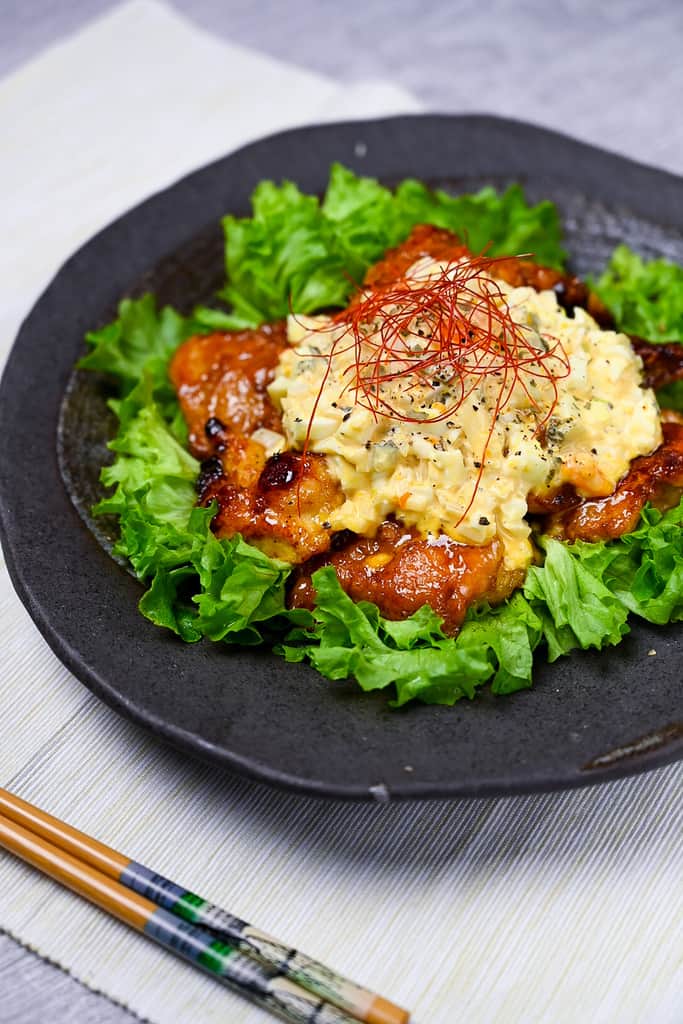
I hope you enjoy this Chicken Nanban recipe! If you try it out, I’d really appreciate it if you could spare a moment to let me know what you thought by giving a review and star rating in the comments below. It’s also helpful to share any adjustments you made to the recipe with our other readers. Thank you!
More Fried Chicken Recipes
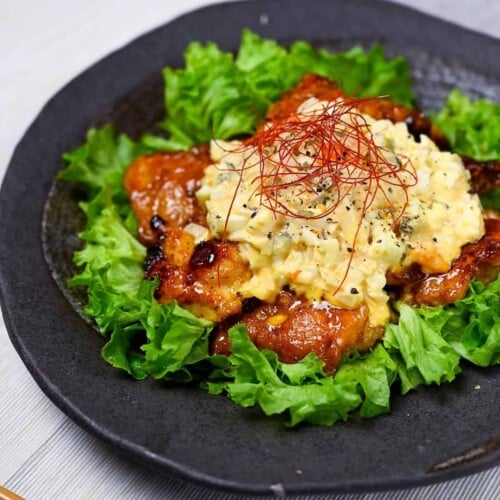
Japanese Chicken Nanban (with Homemade Tartar Sauce)
Ingredients
Tartar Sauce
- 1 small pickled gherkin
- ⅛ yellow onions
- 1 hard-boiled egg
- ½ tbsp lemon juice
- 2 tbsp Japanese mayonnaise
- 1 tsp sugar
- ½ tsp tomato ketchup
- 1 pinch salt and pepper
- ¼ tsp dried parsley
Nanban Sauce
- 1 tbsp sugar
- 1 tbsp Japanese soy sauce (koikuchi shoyu)
- 1½ tbsp rice vinegar or apple cider vinegar
Chicken
- 300 g boneless chicken thigh boneless, skin-on preferred
- 1 pinch salt and pepper
- 1 tbsp all-purpose flour
- 1 egg
- 2 tbsp potato starch (katakuriko) or corn starch
- 2 tbsp cooking oil flavourless, high smoke point like vegetable oil or canola
- 1 bunch chili threads optional garnish
- 4-6 lettuce leaves optional for serving
My recommended brands of ingredients and seasonings can be found in my Japanese pantry guide.
Can’t find certain Japanese ingredients? See my substitution guide here.
Instructions
- Start by finely dicing 1 small pickled gherkin, 1 hard-boiled egg and 1 hard-boiled egg and placing them in a mixing bowl.

- Add ½ tbsp lemon juice, 2 tbsp Japanese mayonnaise, 1 tsp sugar, ½ tsp tomato ketchup, ¼ tsp dried parsley and 1 pinch salt and pepper to the bowl.

- Mix until all the ingredients are evenly distributed.

- Transfer the tartar sauce to a sealable container and chill in the fridge until its time to serve.

- To make the nanban sauce, take a small bowl and mix 1 tbsp sugar, 1 tbsp Japanese soy sauce (koikuchi shoyu) and 1½ tbsp rice vinegar together. Set aside for later.

- Cut 300 g boneless chicken thigh into bitesize pieces and place them in a bowl. Add 1 pinch salt and pepper and 1 tbsp all-purpose flour and mix until the chicken pieces are evenly covered.

- Crack 1 egg into the bowl and mix until the chicken is fully coated in the egg.

- Add the 2 tbsp potato starch (katakuriko) and mix until well incorporated and lump-free.

- Heat a pan on medium. Once hot, add 2 tbsp cooking oil and swirl it around until evenly coated. Add the chicken and fry for 3 minutes on each side.

- Once the chicken is cooked through, turn the heat down to medium-low, push the chicken to one side and wipe away the excess oil with kitchen paper.

- Add the nanban sauce and move the chicken around the pan until each piece is fully coated.

- Once the sauce is slightly thickened and glossy, remove the pan from the heat.

- Arrange 4-6 lettuce leaves on a serving plate (optional) and make a mountain of chicken in the middle.

- Top with a generous amount of tartar sauce and 1 bunch chili threads for decoration.

- Enjoy!
Video
Notes
- Leftover tartar sauce can be kept in a sealed container in the refrigerator for 4-5 days.
- I recommend serving chicken nanban with rice.





Made the recipe & it was SO delicious!
Thank you for the 5 star review, so glad you liked it!
Looks great can’t wait to try it!
Hi Suzanne,
Thank you very much!
Yuto
Excellent recipe, simple ingredients and it’s delicious.
Thank you.
Hi Kim,
Thank you for making this recipe and sharing your experience! 🙂
Yuto